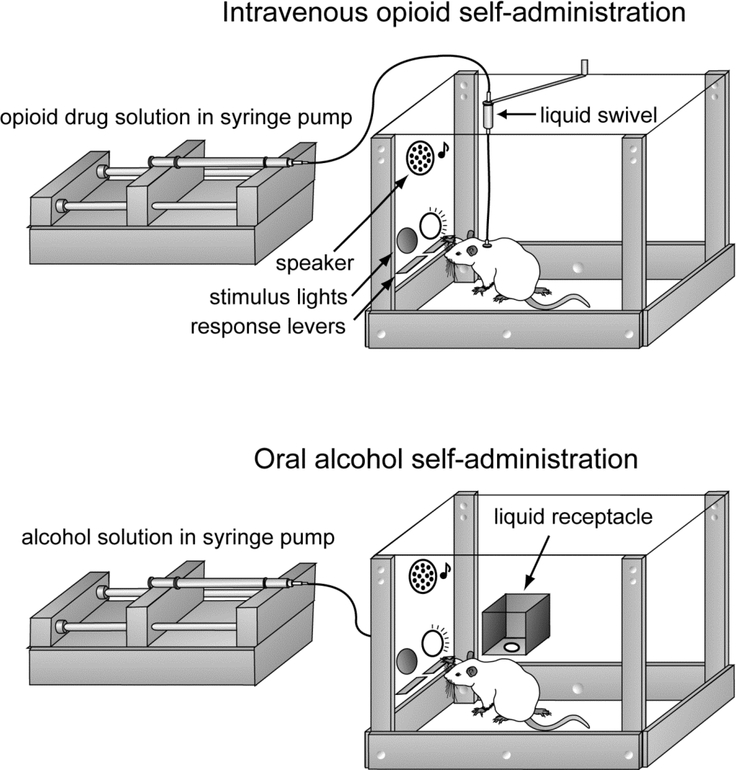Figure 3.
Common rodent models of opioid and alcohol self-administration. In the intravenous self-administration paradigm (top), rodents are surgically implanted with a venous catheters and vascular access port, which is connected to plastic tubing and a liquid swivel that allow for intravenous delivery of an opioid (i.e., fentanyl or heroin) following completion of an operant task (i.e., correct pressing one of two available levers). During drug infusion, which is achieved by a computer-controlled syringe pump, discrete auditory and/or visual cues are presented that allow for the animal to develop drug-cue associations. In the oral self-administration paradigm (bottom), non-surgerized rodents are provided with a small amount of an alcohol-containing liquid (usually 0.1 ml of a 10–20% w/v solution) into a liquid receptacle following completion of an operant task (i.e., lever press). As with intravenous self-administration, alcohol solution delivery is accompanied by presentation of discrete auditory and/or visual cues that allow for the animal to develop alcohol-cue associations. Reproduced from [187] with permission of Springer Nature.

